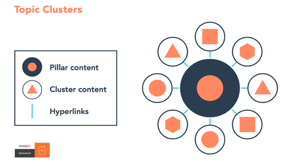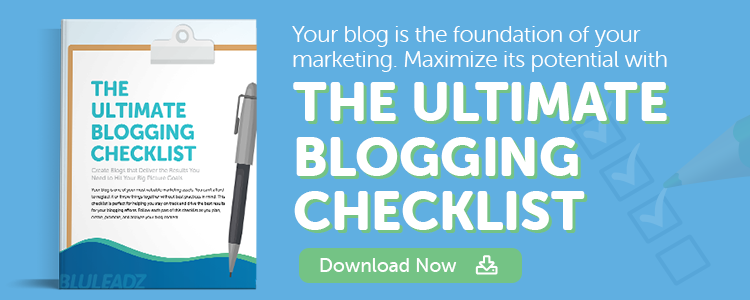Pillar pages and topic clusters are leading the future of content marketing. Jeff highlights the benefits of using this approach in your strategy.
But pillar pages aren't a new concept. In fact, they were first referenced over 10 years ago.
The History of the Pillar PageA 2006 ProBlogger article described "pillar articles" as pieces of content that exceeded 500 words and provided practical tips or advice that is both evergreen and broad.
Pillar pages are also referred to as cornerstone content. This is often described as your most important articles on your website. Cornerstone pieces should be comprehensive, relevant to your ideal readers, and the best content for newcomers to check out first.
While a lot has changed in the content marketing world since pillar pages were first referenced, the concept is essentially the same today.
What Makes an Ideal Pillar Page?
When you're developing pillar pages, you need to follow a set of criteria to get the most out of them.
Here's what makes a pillar page awesome:
- It's ungated so visitors can find it through organic search.
- It covers one main topic in a comprehensive way.
- It has a higher word count than most of your other ungated content.
- It is optimized for keywords, but, most importantly, it relates directly to a specific topic.
- It is designed with user experience as a top priority.
- It acts as a hub in your topic cluster, linking to and earning backlinks from your other content that covers related subtopics.
- It is updated for accuracy and comprehensiveness regularly.
As you can see, building a pillar page requires a lot more strategy and continuous attention than a typical blog article. But the additional effort is vital to the long term success of your content marketing strategy.
How Pillar Pages Impact the Big Picture
As mentioned by Jeff in the Marketing Minute, there are three major advantages to creating pillar pages and keeping them up to date.
They Boost Search Visibility.
Your SEO strategy will see a big win once you publish your pillar page and build out your topic cluster. You can earn link juice by linking your cluster content to your pillar page and vice versa.
Also, when high authority resources link to your pillar page, you will earn more credibility in your industry. And in the eyes of search engines, those backlinks act as votes of confidence in you. Therefore, your content will rank higher.
They Keep Your Content Strategy Organized.
Content structures can be scattered, including individual pieces of content that were not properly organized. Visitors may struggle trying to find exactly what they are looking for, and URLs of articles that cover similar content will compete against one another for rankings.
But now, with topic clustering, you can be more deliberate in how you develop your content strategy and the architecture of your site. Build your pillar page based on a broad topic, then write other content based on specific keywords that have a semantic relationship to each other and link them.

They Generate Authority (And Even Leads).
Earning backlinks from other high authority sites can boost your ranking, but, more importantly, your ideal readers will see you as an authority as well. They will be satisfied when they search for content and find your awesome pillar pages and cluster content.
Those readers will think of you as a trustworthy, credible source of information. And they will keep coming back to you.
You can get even more mileage out of your pillar pages by offering it as a downloadable ebook. Simply add a form for visitors to fill out, and let them take the content with them in the form of a PDF.
This way, your audience can enjoy the content whenever and wherever they are. But you also generate leads, which is the ultimate goal of marketing.
Want more insights on content, inbound marketing, design, and everything in between? Check out our blog or YouTube channel today!


Alex Dunn
Alex is a University of South Florida mass communications graduate and Video/Media Specialist at Bluleadz. He is a big movie nerd, loves (possibly dangerous) concerts and enjoys taunting co-workers with a camera. He's probably seen The Royal Tenenbaums 14 times by now.